Samgyetang
삼계탕, samgye-tang, 蔘鷄湯
Samgye-tang , or ginseng chicken soup, meaning ginseng (Kor. sam) - chicken (Kor. gye) - soup (Kor. tang) in Korean, consists primarily of a whole young chicken (poussin) or quail filled with garlic, rice, jujube and ginseng. Samgye-tang is a Korean traditional soup for body health. Samgye-tang is a representative summer health food. Soup made with chicken that is slightly larger than the chick is called Yeonggye Baeksuk, and the chicken is divided into half is called Banggye-tang. During the Joseon period (1392-1897), people enjoyed the numerous chicken soup dishes that were similar to Samgye-tang, including Yeongye-tang, Chonggye-tang, and Hwanggye-tang. While it was the custom to make a soup with young chicken and serve it to elders during the summer days, the chicken boiled with milkvetch roots and its broth were served to the sick queen during King Injo's reign. However, the description of the dish that most closely resembles today's form of Samgye-tang can be found in Joseon Yorijaebeop (조선 요리제법; 朝鮮料理製法), the cookbook Shinyoung Bang, the professor of Ewha Womans University, wrote in 1917 to compile the information on how to make various traditional dishes of Joseon. In the book, it is described that Dakguk (닭국), or chicken soup, is made by gutting a chicken and stuffing the inside with three spoons of glutinous rice and one spoon of ginseng powder, followed by tying up the opening and boiling the chicken with ten bowls of water. During the Japanese colonial era, the Japanese officials who investigated the cultures of former Joseon noted that rich families boiled the chicken stuffed with ginseng and used the broth as medicine in summer. The dish began to be commercially sold at restaurants around 1940s and under the name Gyesam-tang (계삼탕; 鷄蔘湯) in 1950s, which meant chicken ginseng soup. With the supplying of modern refrigerators in Korea, it became possible to preserve a ginseng as whole instead of powder. Thus, since 1960s, it became more common to stuff the chicken with a whole piece of ginseng instead of powder, reaching today's form of the dish. To emphasize the medicinal effects of the ginseng in the soup, many people since then have started calling the dish Samgye-tang (ginseng chicken soup) instead of Gyesam-tang (chicken ginseng soup).
Source: Wikipedia
Recipes
Samgyetang: Korean Ginseng Chicken Soup Recipe | TASTE

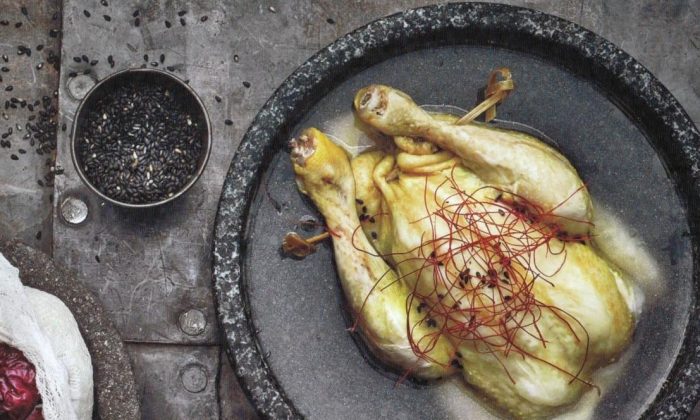

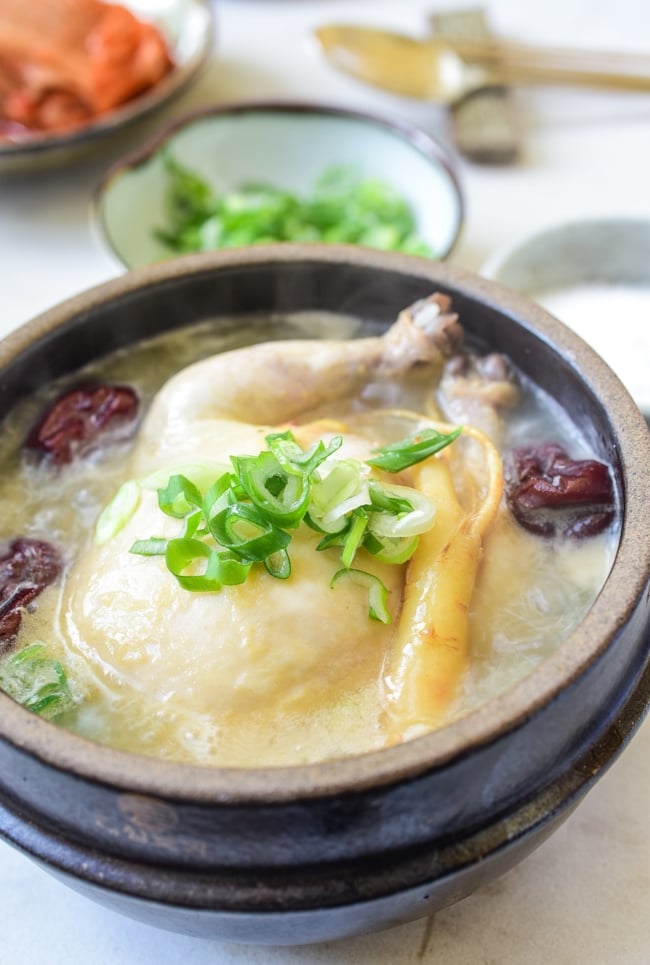
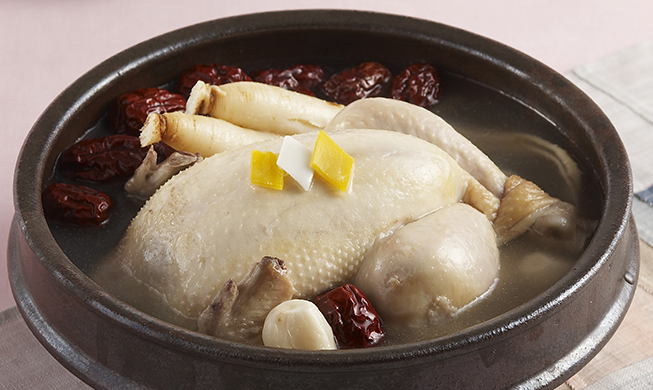

:max_bytes(150000):strip_icc()/4558019-5c183f32dd644bb7b6226577cc00bd77.jpg)
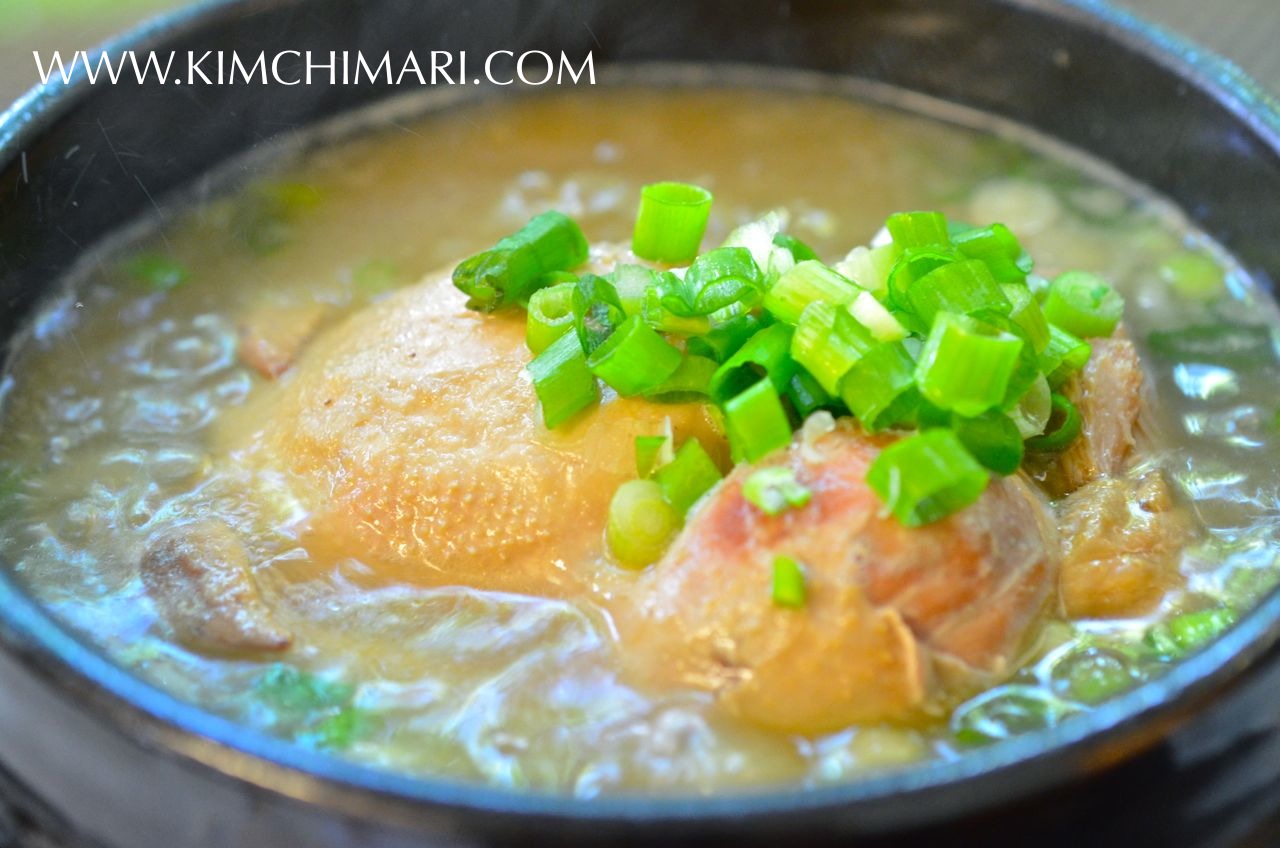

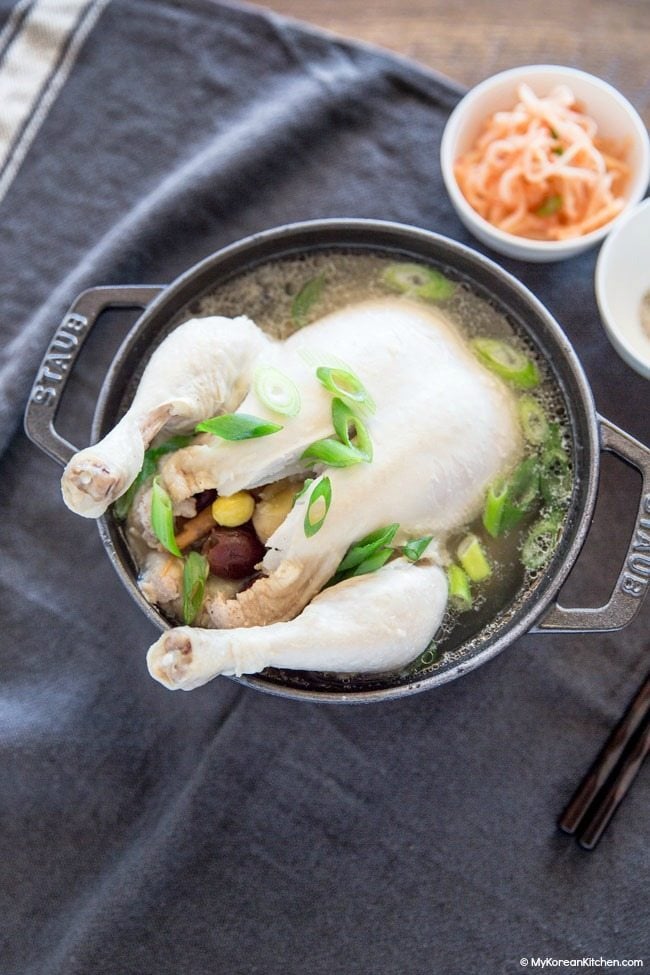
:max_bytes(150000):strip_icc()/__opt__aboutcom__coeus__resources__content_migration__serious_eats__seriouseats.com__2019__03__20190314-Samgyetang-vicky-wasik-17-865db4610ee740d986786b689d9fecb6.jpg)


